Growing Kohlrabi at Home might sound like an exotic culinary adventure reserved for seasoned gardeners, but trust me, it’s surprisingly simple and incredibly rewarding! Have you ever dreamt of plucking a crisp, slightly sweet, and utterly unique vegetable straight from your backyard? Well, dream no more! This DIY guide will unlock the secrets to cultivating this unusual veggie, even if you’re a complete beginner.
Kohlrabi, often called a “German turnip” (although it’s not a turnip at all!), has a fascinating history. Originating in Northern Europe, it’s been a staple in various cuisines for centuries. Think of hearty German stews or vibrant Asian stir-fries – kohlrabi adds a delightful crunch and subtle flavor that elevates any dish. But beyond its culinary appeal, growing your own kohlrabi is about more than just fresh ingredients.
In today’s world, where we’re increasingly conscious of where our food comes from, growing kohlrabi at home offers a fantastic way to connect with nature, reduce your carbon footprint, and enjoy the unparalleled taste of homegrown produce. Plus, let’s be honest, who wouldn’t want to impress their friends and family with a vegetable they’ve nurtured from seed to table? This DIY guide will provide you with all the tips and tricks you need to successfully grow kohlrabi at home, from seed selection to harvesting, ensuring a bountiful and delicious harvest. Let’s get started!
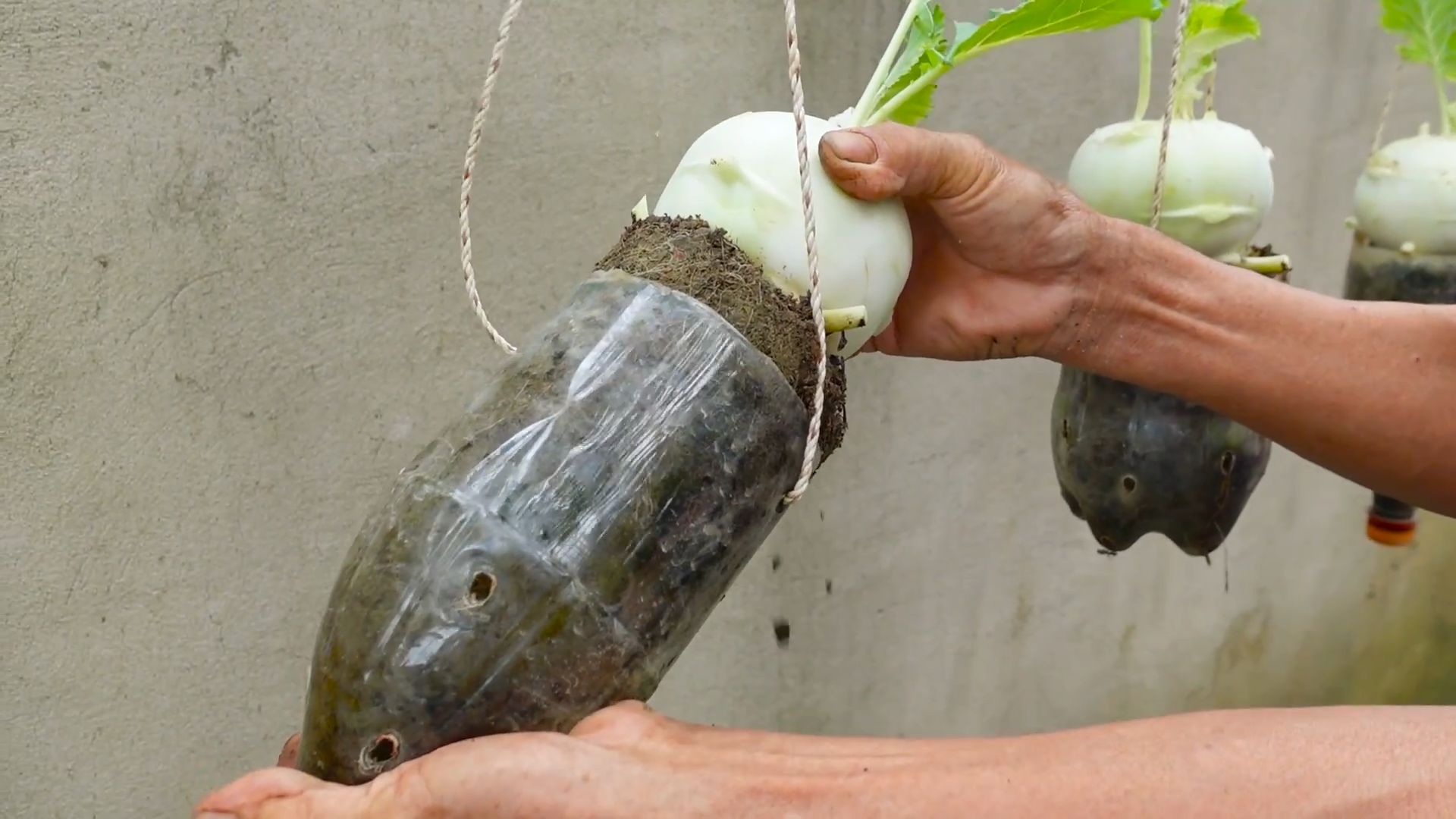
Growing Kohlrabi at Home: A Beginner’s Guide
Kohlrabi, sometimes called a German turnip, is a delightfully crunchy and slightly sweet vegetable that’s surprisingly easy to grow at home. Don’t let its unusual appearance intimidate you! I’m going to walk you through everything you need to know to successfully cultivate this cool-season crop, from seed to harvest.
Understanding Kohlrabi
Before we dive into the nitty-gritty, let’s get acquainted with kohlrabi. It’s a member of the Brassica family, which also includes cabbage, broccoli, and cauliflower. The edible part is the swollen stem, which grows above ground. You can eat it raw, cooked, or even pickled! The leaves are also edible and can be used like collard greens.
Why grow kohlrabi?
* It’s relatively fast-growing, maturing in as little as 6-8 weeks.
* It’s packed with nutrients, including vitamin C, potassium, and fiber.
* It’s versatile in the kitchen.
* It’s a unique and interesting addition to your garden.
Choosing the Right Variety
There are several kohlrabi varieties to choose from, each with slightly different characteristics. Here are a few popular options:
* Early White Vienna: A classic, early-maturing variety with pale green bulbs.
* Early Purple Vienna: Similar to Early White Vienna, but with purple skin.
* Grand Duke: A larger, later-maturing variety known for its excellent flavor.
* Kossak: A giant variety that can grow to be quite large without becoming woody.
* White Vienna: A popular variety with a mild flavor and crisp texture.
I personally prefer Early White Vienna for its quick growth and reliable performance. But feel free to experiment and find the variety that best suits your taste and growing conditions.
Getting Started: Planting Kohlrabi
Kohlrabi thrives in cool weather, so timing is crucial. I usually aim for two planting seasons:
* Spring Planting: Start seeds indoors 6-8 weeks before the last expected frost. Transplant seedlings outdoors 2-3 weeks before the last frost.
* Fall Planting: Direct sow seeds 6-8 weeks before the first expected frost.
Here’s a step-by-step guide to planting kohlrabi:
1. Starting Seeds Indoors (Optional):
* Fill seed trays or small pots with a good-quality seed-starting mix.
* Sow seeds about 1/4 inch deep.
* Water gently and keep the soil consistently moist.
* Place the trays in a warm location (around 70°F) or use a heat mat.
* Once seedlings emerge, provide them with plenty of light. A grow light is ideal, but a sunny windowsill can also work.
* Thin seedlings to one plant per cell or pot.
* Harden off seedlings by gradually exposing them to outdoor conditions for a week before transplanting.
2. Preparing the Garden Bed:
* Choose a location that receives at least 6 hours of sunlight per day.
* Kohlrabi prefers well-drained soil that is rich in organic matter. Amend the soil with compost or well-rotted manure.
* Loosen the soil to a depth of at least 12 inches.
* Remove any rocks, weeds, or debris.
* The ideal soil pH for kohlrabi is between 6.0 and 7.5. You can test your soil pH with a soil testing kit and amend it accordingly.
3. Transplanting Seedlings (If Starting Indoors):
* Space seedlings 6-8 inches apart in rows that are 12-18 inches apart.
* Dig a hole slightly larger than the root ball of the seedling.
* Gently remove the seedling from its container and place it in the hole.
* Backfill with soil and gently firm around the base of the plant.
* Water thoroughly.
4. Direct Sowing Seeds (If Not Starting Indoors):
* Sow seeds about 1/4 inch deep and 1 inch apart.
* Thin seedlings to 6-8 inches apart once they have developed a few true leaves.
* Water gently and keep the soil consistently moist.
Caring for Your Kohlrabi Plants
Once your kohlrabi plants are in the ground, it’s important to provide them with proper care to ensure a healthy and productive harvest.
1. Watering:
* Kohlrabi needs consistent moisture to thrive. Water deeply and regularly, especially during dry periods.
* Aim to keep the soil consistently moist, but not waterlogged.
* Mulching around the plants can help to retain moisture and suppress weeds.
2. Fertilizing:
* Kohlrabi is a heavy feeder, so it benefits from regular fertilization.
* Apply a balanced fertilizer (e.g., 10-10-10) according to the package directions.
* You can also side-dress the plants with compost or well-rotted manure.
3. Weeding:
* Keep the garden bed free of weeds, as they can compete with kohlrabi plants for nutrients and water.
* Hand-pull weeds regularly or use a hoe to cultivate the soil.
* Mulching can also help to suppress weed growth.
4. Pest and Disease Control:
* Kohlrabi can be susceptible to certain pests and diseases, such as cabbage worms, aphids, and clubroot.
* Inspect your plants regularly for signs of pests or diseases.
* Use organic pest control methods, such as insecticidal soap or neem oil, to control pests.
Kohlrabi, sometimes called a German turnip, is a delightfully crunchy and slightly sweet vegetable that’s surprisingly easy to grow at home. Don’t let its unusual appearance intimidate you! I’m going to walk you through everything you need to know to successfully cultivate this cool-season crop, from seed to harvest.
Understanding Kohlrabi
Before we dive into the nitty-gritty, let’s get acquainted with kohlrabi. It’s a member of the Brassica family, which also includes cabbage, broccoli, and cauliflower. The edible part is the swollen stem, which grows above ground. You can eat it raw, cooked, or even pickled! The leaves are also edible and can be used like collard greens.
Why grow kohlrabi?
* It’s relatively fast-growing, maturing in as little as 6-8 weeks.
* It’s packed with nutrients, including vitamin C, potassium, and fiber.
* It’s versatile in the kitchen.
* It’s a unique and interesting addition to your garden.
Choosing the Right Variety
There are several kohlrabi varieties to choose from, each with slightly different characteristics. Here are a few popular options:
* Early White Vienna: A classic, early-maturing variety with pale green bulbs.
* Early Purple Vienna: Similar to Early White Vienna, but with purple skin.
* Grand Duke: A larger, later-maturing variety known for its excellent flavor.
* Kossak: A giant variety that can grow to be quite large without becoming woody.
* White Vienna: A popular variety with a mild flavor and crisp texture.
I personally prefer Early White Vienna for its quick growth and reliable performance. But feel free to experiment and find the variety that best suits your taste and growing conditions.
Getting Started: Planting Kohlrabi
Kohlrabi thrives in cool weather, so timing is crucial. I usually aim for two planting seasons:
* Spring Planting: Start seeds indoors 6-8 weeks before the last expected frost. Transplant seedlings outdoors 2-3 weeks before the last frost.
* Fall Planting: Direct sow seeds 6-8 weeks before the first expected frost.
Here’s a step-by-step guide to planting kohlrabi:
1. Starting Seeds Indoors (Optional):
* Fill seed trays or small pots with a good-quality seed-starting mix.
* Sow seeds about 1/4 inch deep.
* Water gently and keep the soil consistently moist.
* Place the trays in a warm location (around 70°F) or use a heat mat.
* Once seedlings emerge, provide them with plenty of light. A grow light is ideal, but a sunny windowsill can also work.
* Thin seedlings to one plant per cell or pot.
* Harden off seedlings by gradually exposing them to outdoor conditions for a week before transplanting.
2. Preparing the Garden Bed:
* Choose a location that receives at least 6 hours of sunlight per day.
* Kohlrabi prefers well-drained soil that is rich in organic matter. Amend the soil with compost or well-rotted manure.
* Loosen the soil to a depth of at least 12 inches.
* Remove any rocks, weeds, or debris.
* The ideal soil pH for kohlrabi is between 6.0 and 7.5. You can test your soil pH with a soil testing kit and amend it accordingly.
3. Transplanting Seedlings (If Starting Indoors):
* Space seedlings 6-8 inches apart in rows that are 12-18 inches apart.
* Dig a hole slightly larger than the root ball of the seedling.
* Gently remove the seedling from its container and place it in the hole.
* Backfill with soil and gently firm around the base of the plant.
* Water thoroughly.
4. Direct Sowing Seeds (If Not Starting Indoors):
* Sow seeds about 1/4 inch deep and 1 inch apart.
* Thin seedlings to 6-8 inches apart once they have developed a few true leaves.
* Water gently and keep the soil consistently moist.
Caring for Your Kohlrabi Plants
Once your kohlrabi plants are in the ground, it’s important to provide them with proper care to ensure a healthy and productive harvest.
1. Watering:
* Kohlrabi needs consistent moisture to thrive. Water deeply and regularly, especially during dry periods.
* Aim to keep the soil consistently moist, but not waterlogged.
* Mulching around the plants can help to retain moisture and suppress weeds.
2. Fertilizing:
* Kohlrabi is a heavy feeder, so it benefits from regular fertilization.
* Apply a balanced fertilizer (e.g., 10-10-10) according to the package directions.
* You can also side-dress the plants with compost or well-rotted manure.
3. Weeding:
* Keep the garden bed free of weeds, as they can compete with kohlrabi plants for nutrients and water.
* Hand-pull weeds regularly or use a hoe to cultivate the soil.
* Mulching can also help to suppress weed growth.
4. Pest and Disease Control:
* Kohlrabi can be susceptible to certain pests and diseases, such as cabbage worms, aphids, and clubroot.
* Inspect your plants regularly for signs of pests or diseases.
* Use organic pest control methods, such as insecticidal soap or neem oil, to control pests.
* Practice crop rotation to prevent soilborne diseases.
* If you encounter clubroot, amend the soil with lime to raise the pH.
Harvesting Kohlrabi
The key to enjoying delicious kohlrabi is to harvest it at the right time. You want to harvest the bulbs when they are about 2-3 inches in diameter. If you let them grow too large, they can become tough and woody.
Here’s how to harvest kohlrabi:
1. Use a sharp knife to cut the bulb from the stem, just above the soil line.
2. Remove the leaves from the bulb. The leaves are also edible and can be cooked like collard greens.
3. Store kohlrabi bulbs in the refrigerator for up to several weeks.
Enjoying Your Harvest
Kohlrabi is a versatile vegetable that can be enjoyed in a variety of ways.
* Raw: Peel and slice or dice kohlrabi and add it to salads or slaws. It has a crisp, slightly sweet flavor that is similar to a mild radish.
* Cooked: Kohlrabi can be steamed, boiled, roasted, or stir-fried. It pairs well with butter, herbs, and spices.
* Pickled: Pickled kohlrabi is a delicious and tangy treat.
Here are a few of my favorite kohlrabi recipes:
* Kohlrabi Slaw: Combine shredded kohlrabi with shredded carrots, mayonnaise, vinegar, and sugar.
* Roasted Kohlrabi: Toss kohlrabi cubes with olive oil, salt, and pepper and roast in the oven until tender.
* Kohlrabi and Potato Soup: Add diced kohlrabi to your favorite potato soup recipe.
Troubleshooting
Even with the best care, you may encounter some challenges when growing kohlrabi. Here are a few common problems and how to address them:
* Bulbs are not forming: This could be due to a lack of sunlight, poor soil, or insufficient watering. Make sure your plants are getting enough sunlight, amend the soil with compost, and water regularly.
* Bulbs are tough and woody: This is usually caused by harvesting the bulbs too late. Harvest kohlrabi when the bulbs are 2-3 inches in diameter.
* Plants are bolting (going to seed): This can happen if the plants are exposed to extreme temperature fluctuations. Try to provide consistent temperatures and water regularly.
* Pests are attacking the plants: Inspect your plants regularly for pests and use organic pest control methods to control them.
Tips for Success
Here are a few additional tips to help you succeed with growing kohlrabi:
* Succession planting: Plant kohlrabi seeds every 2-3 weeks to ensure a continuous harvest.
* Choose the right variety: Select a variety that is well-suited to your climate and growing conditions.
* Provide consistent moisture: Kohl
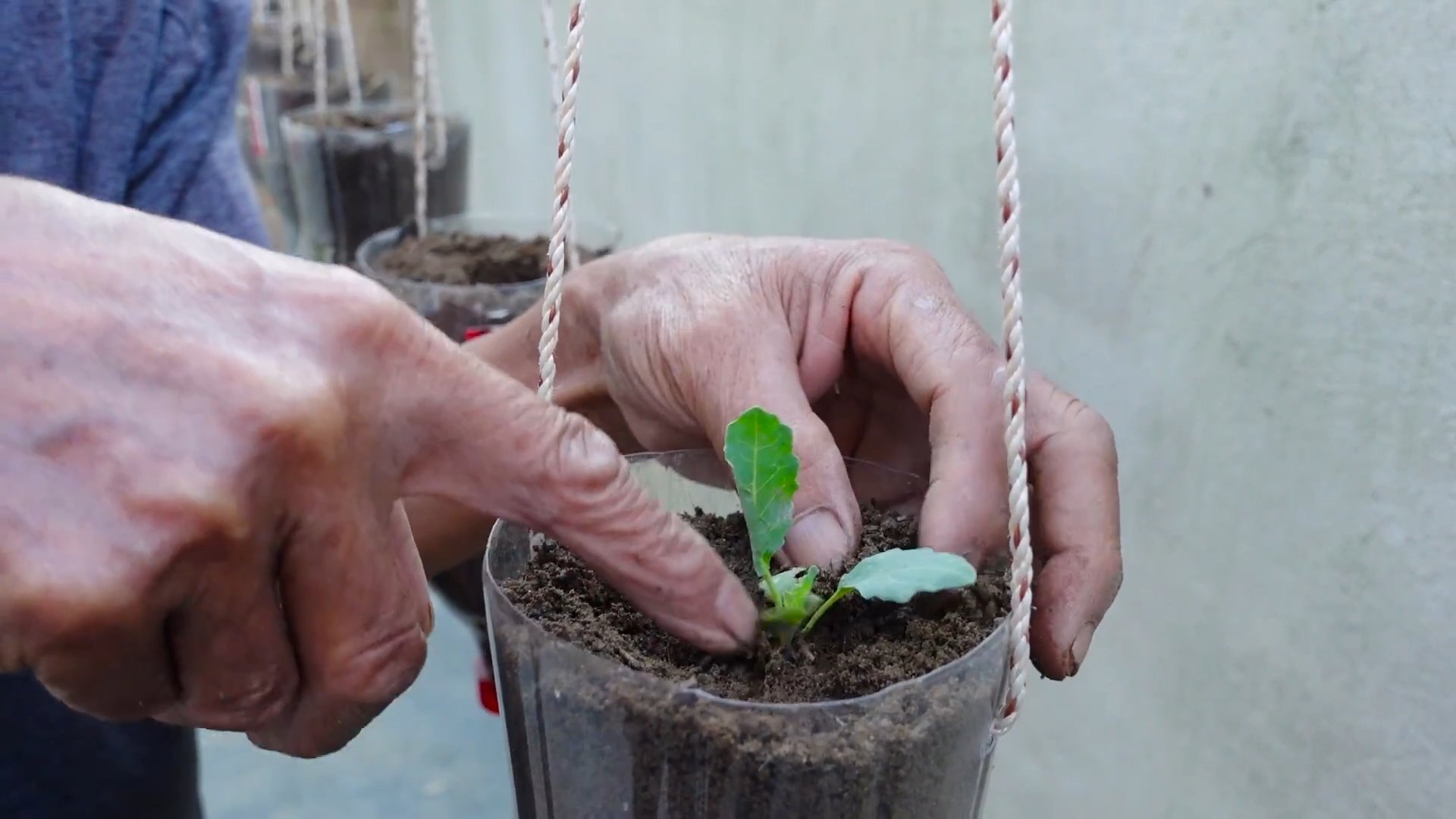
Conclusion
So, there you have it! Growing kohlrabi at home is not only achievable but also incredibly rewarding. From the crisp, refreshing taste of the bulb to the nutritious greens, you’re getting a two-for-one deal that surpasses anything you’ll find at the grocery store. We’ve walked you through the entire process, from selecting the right variety to harvesting your bounty, and hopefully, we’ve demystified any concerns you might have had.
But why is this DIY trick a must-try? Simply put, it’s about control and quality. When you grow your own kohlrabi, you know exactly what’s going into it – no mystery pesticides or long-distance transportation compromising its freshness. You get to nurture your plants from seed to table, ensuring the most vibrant flavor and optimal nutritional value. Plus, there’s an undeniable satisfaction that comes from harvesting something you’ve grown yourself. It’s a connection to nature, a boost to your well-being, and a delicious addition to your meals, all rolled into one.
Looking for some variations to spice things up? Consider these ideas:
* Colored Varieties: Experiment with purple or white kohlrabi varieties for a visual appeal in your garden and on your plate. The flavor differences are subtle, but the aesthetic impact is significant.
* Succession Planting: Plant kohlrabi seeds every few weeks for a continuous harvest throughout the growing season. This ensures a steady supply of fresh kohlrabi for your culinary adventures.
* Companion Planting: Plant kohlrabi alongside beneficial companions like chamomile, dill, or rosemary to deter pests and improve growth.
* Kohlrabi Greens Recipes: Don’t discard the greens! They are packed with nutrients and can be used in salads, stir-fries, or even kohlrabi green chips. Sauté them with garlic and olive oil for a simple and delicious side dish.
* Fermented Kohlrabi: For a tangy and probiotic-rich treat, try fermenting your kohlrabi. It’s a great way to preserve your harvest and add a unique flavor to your meals.
We wholeheartedly encourage you to give this DIY trick a try. Growing kohlrabi at home is easier than you might think, and the rewards are well worth the effort. Imagine the satisfaction of serving a dish featuring kohlrabi you nurtured from a tiny seed!
But don’t just take our word for it. Get your hands dirty, plant those seeds, and experience the joy of growing your own kohlrabi. And most importantly, share your experience with us! We’d love to hear about your successes, your challenges, and your favorite ways to enjoy your homegrown kohlrabi. Share your photos, recipes, and tips in the comments below. Let’s build a community of kohlrabi enthusiasts!
Frequently Asked Questions (FAQ)
What is kohlrabi, and what does it taste like?
Kohlrabi, often called a German turnip, is a cruciferous vegetable related to cabbage, broccoli, and cauliflower. It features a bulbous stem that grows above ground and edible leaves. The taste is often described as a mild, sweet, and slightly peppery flavor, similar to a turnip but milder and sweeter. The texture is crisp and juicy, making it a refreshing addition to salads and slaws. The leaves taste similar to collard greens or kale.
When is the best time to plant kohlrabi?
The best time to plant kohlrabi depends on your climate. It’s a cool-season crop, so it thrives in spring and fall. For a spring harvest, start seeds indoors 4-6 weeks before the last expected frost or direct sow them outdoors 2-3 weeks before the last frost. For a fall harvest, sow seeds in mid-summer, about 6-8 weeks before the first expected frost. Avoid planting during the hottest months, as high temperatures can cause the kohlrabi to become tough and bitter.
How much sunlight does kohlrabi need?
Kohlrabi needs at least 6 hours of direct sunlight per day to thrive. Choose a sunny location in your garden where the plants will receive ample sunlight throughout the day. If you’re growing kohlrabi indoors, use grow lights to supplement natural sunlight.
What kind of soil is best for growing kohlrabi?
Kohlrabi prefers well-drained, fertile soil with a pH between 6.0 and 7.5. Amend your soil with compost or other organic matter to improve drainage and fertility. Avoid heavy clay soils, as they can retain too much moisture and lead to root rot. A slightly sandy loam is ideal.
How often should I water kohlrabi?
Kohlrabi needs consistent moisture to grow properly. Water deeply and regularly, especially during dry periods. Aim to keep the soil consistently moist but not waterlogged. Mulching around the plants can help retain moisture and suppress weeds.
How do I fertilize kohlrabi?
Fertilize kohlrabi with a balanced fertilizer at planting time. You can also side-dress with a nitrogen-rich fertilizer a few weeks after planting to promote leafy growth. Avoid over-fertilizing, as this can lead to excessive foliage growth at the expense of bulb development.
What are some common pests and diseases that affect kohlrabi?
Common pests that affect kohlrabi include cabbage worms, aphids, flea beetles, and cabbage root maggots. Diseases include clubroot, black rot, and downy mildew. Use row covers to protect plants from pests. Practice crop rotation and choose disease-resistant varieties to prevent diseases. Inspect your plants regularly and take action promptly if you notice any signs of pests or diseases.
When is kohlrabi ready to harvest?
Kohlrabi is typically ready to harvest 6-8 weeks after planting. Harvest the bulbs when they are about 2-3 inches in diameter. Larger bulbs can become tough and woody. The leaves can be harvested at any time. To harvest the bulb, cut it off at the base with a sharp knife.
How do I store kohlrabi?
Store kohlrabi bulbs in the refrigerator for up to several weeks. Remove the leaves before storing, as they can draw moisture from the bulb. Store the leaves separately in a plastic bag in the refrigerator. Kohlrabi can also be frozen after blanching.
Can I eat the kohlrabi leaves?
Yes, the kohlrabi leaves are edible and nutritious. They can be used in salads, stir-fries, soups, or stews. The leaves taste similar to collard greens or kale. Harvest the leaves when they are young and tender for the best flavor.
My kohlrabi bulbs are cracking. What’s causing this?
Cracking in kohlrabi bulbs is often caused by inconsistent watering. When the soil dries out and then is suddenly watered heavily, the bulbs can expand too quickly, leading to cracking. Ensure consistent moisture levels by watering regularly and mulching around the plants.
Why is my kohlrabi tough and bitter?
Tough and bitter kohlrabi is often caused by growing conditions that are too hot or dry. Kohlrabi prefers cool, moist conditions. High temperatures can cause the bulbs to become tough and bitter. Ensure adequate watering and provide shade during the hottest part of the day.
Can I grow kohlrabi in containers?
Yes, kohlrabi can be grown in containers. Choose a container that is at least 12 inches deep and wide. Use a well-draining potting mix and provide adequate sunlight and water. Container-grown kohlrabi may need to be fertilized more frequently than kohlrabi grown in the ground.
Is kohlrabi good for you?
Yes, kohlrabi is a very nutritious vegetable. It is a good source of vitamin C, potassium, fiber, and antioxidants. It is also low in calories and fat. Adding kohlrabi to your diet can help boost your immune system, improve digestion, and protect against chronic diseases.


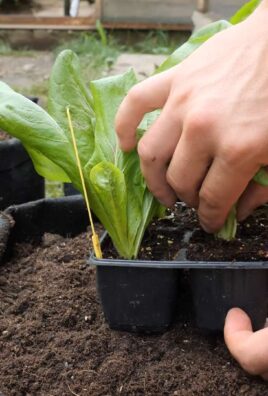
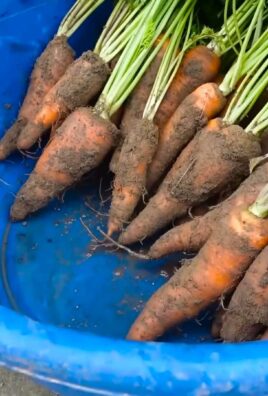
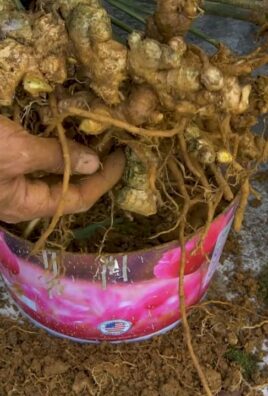
Leave a Comment